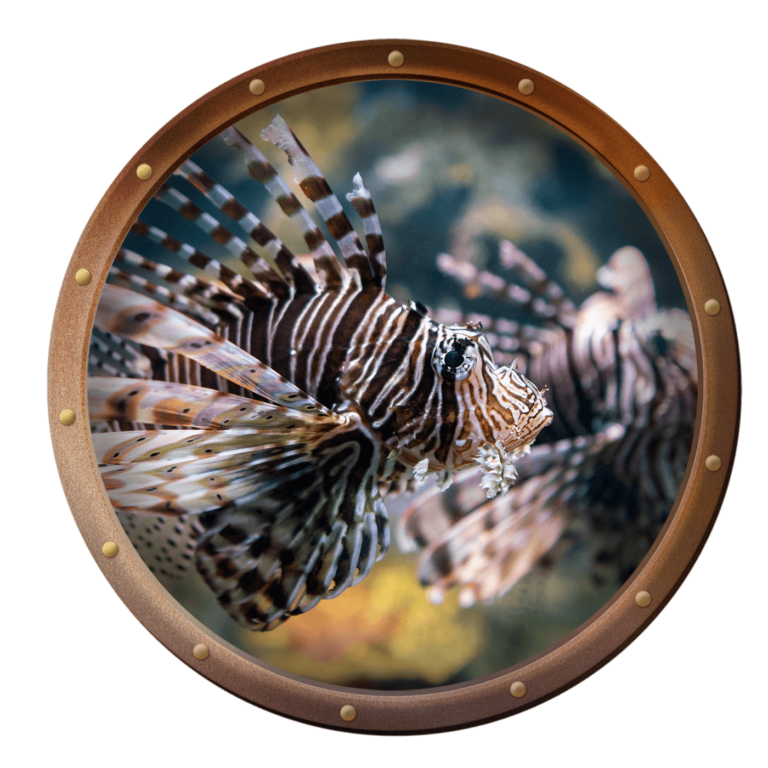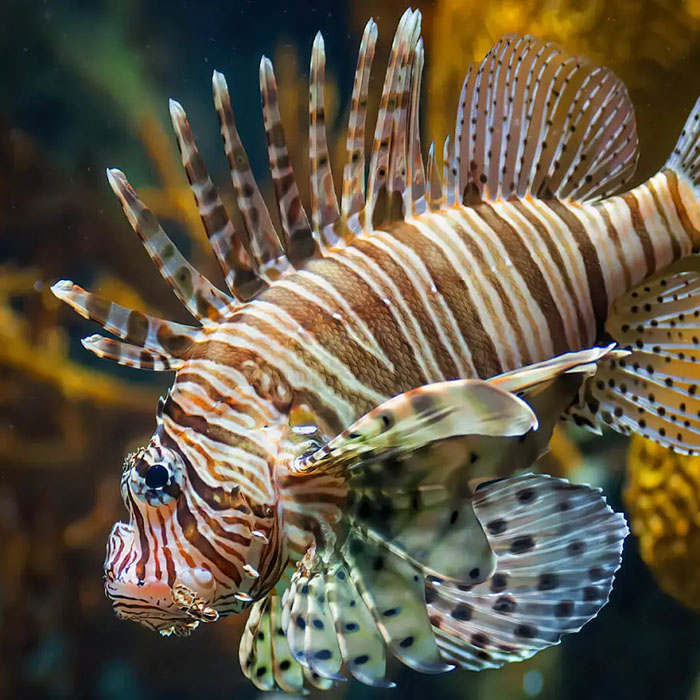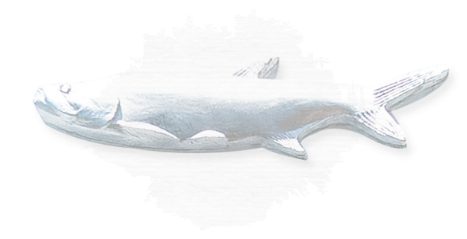WHEN YOU SEE A LIONFISH...
The first things you’ll notice are:
Their red/white zebra stripes • Long pectoral fins • Their needle-like dorsal fins
The second thing you’ll see if you get too close is venomous needlelike dorsal fins. Fortunately, the venom released from their dorsal fins is purely defensive (they are not out to get you). Unfortunately, a sting from a lionfish is excruciating and can cause nausea and breathing problems, but it is rarely fatal.
Lionfish rely on camouflage and lightning-fast reflexes to capture prey, mainly fish and shrimp. Most often, lionfish corral them into a corner. They can consume prey more than half their size and are known to ingest more than 70 marine species. They compete for food with native predatory fish, such as grouper and snapper.
Lionfish are also known as turkey, dragon and scorpion fish.
On average, lionfish grow to be about 12 inches long, but they can grow to 15 inches and reach up to 18 inches when not in their native waters. As mentioned before, lionfish have needlelike (also referred to as spines) dorsal fins — 18 of them, to be exact. These “spines” should be avoided during capturing and handling due to their ability to inflict painful injuries.
Lionfish are natives of the Indo-Pacific and the Red Sea. The first reports of lionfish occurred off Florida’s Atlantic Coast in 1985. It’s still unknown how the lionfish found themselves in our waters, but all it took was a handful of the species to start an invasion. Since the 2000s, reports of lionfish have increased rapidly. In 2010, they found their way to the northern Gulf of Mexico. One theory is the lionfish likely followed currents up the Atlantic Coast, around to the Bahamas, and then into the Gulf.
Lionfish are found in shallow waters and depths of up to 1,000 feet.
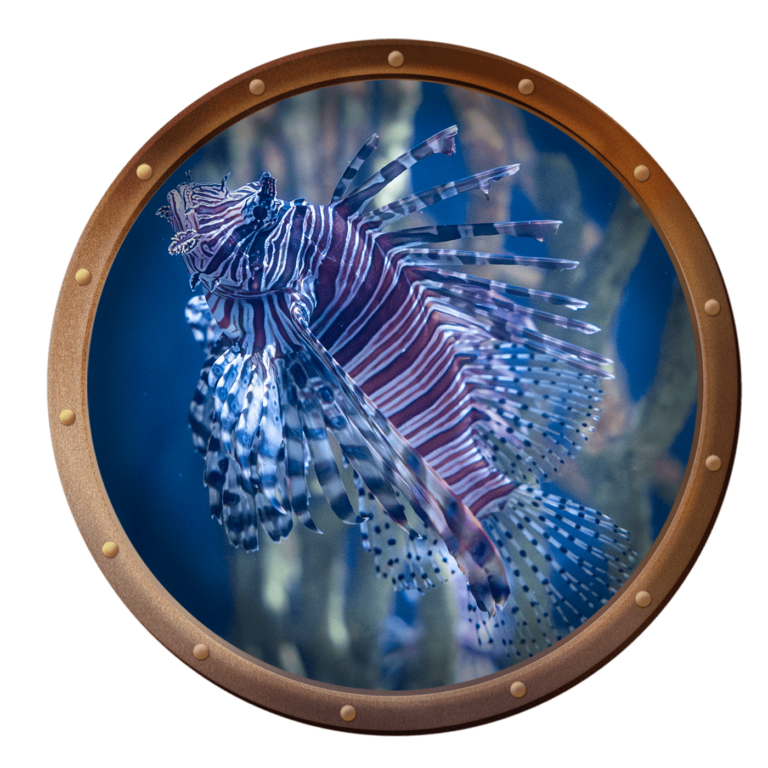
Lionfish are predatory reef fish, meaning they eat native fish, which then reduces native populations and negatively affects the overall habitat and health of the reef as they rid the environment of species that serve important ecological roles, such as fish that keep algae in check on the reefs. Lionfish compete for food with native predatory fish such as grouper and snapper. The Florida Fish and Wildlife Conservation Commission encourages people to remove lionfish from Florida waters to help limit the negative impacts on native marine life and ecosystems. Lionfish can be speared, caught in handheld nets, or caught on hook and line. There is no recreational or commercial bag limit.
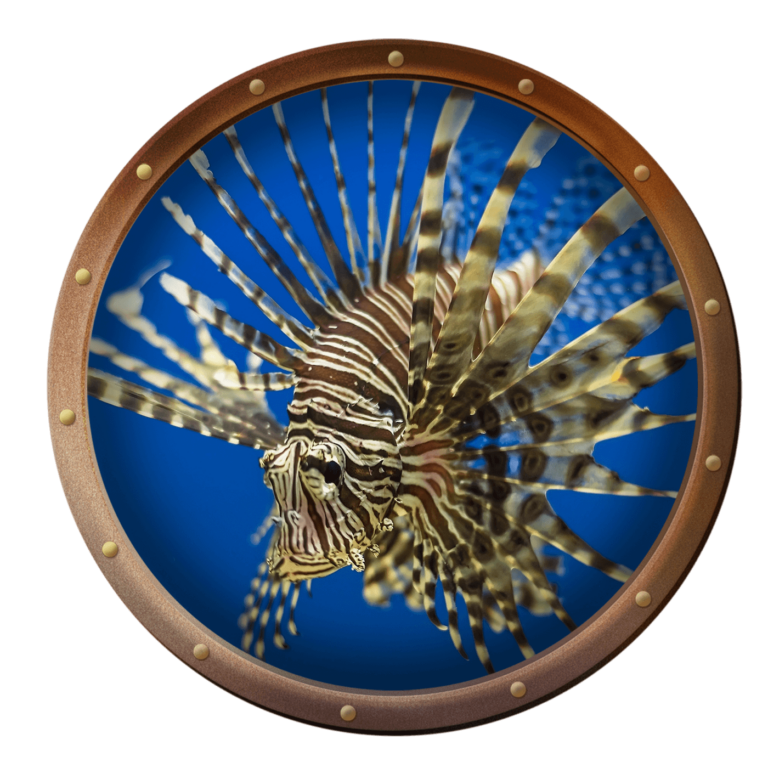
Lionfish typically reach maturity in less than a year, but their growth slows as they get bigger. Males mature at about 4 inches and females at about 7 inches. When lionfish spawn, females release two egg masses of about 12,000-15,000 eggs each. These masses drift for about 25 days. In warmer climates, lionfish can spawn every four days.
The flesh of lionfish is not poisonous or venomous, and it is popular in some parts of the world as food. However, its population is growing, causing concern in the United States, where some feel this nonindigenous species presents human and environmental dangers.
Once an adult lionfish finds a suitable habitat, it stays there and can eventually reach densities of more than 200 adults per acre.
